

Suunto Blog
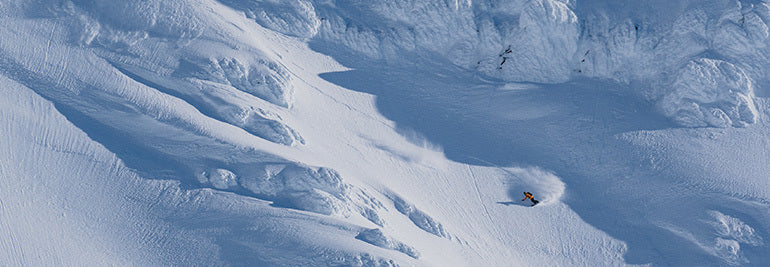
Born to shred in the Arctic
Making his adventures sustainable is a major focus for Antti now. © Jaakko PostiWinter has nearly arrived in Lapland, where Finnish splitboarder Antti Autti is preparing his body and mind for a year long adventure project – in collaboration with Suunto – that will test his limits.
In a week’s time, the long polar night will arrive, leaving only two hours of daylight every 24 hours. That’s not stopping the 34-year-old freerider and filmmaker from heading out into the inky blue night to do what he loves.
“The polar night is not dark in my opinion,” he says. “The Arctic has incredibly changing light; each season is different. The winter here is really magical.”Exploring remote areas of Lapland requires careful planning, Antti says. © Jaakko Posti
Antti has completed the first part of his new adventure film project, Roam, in which he and his friends explore new freeriding territory in Lapland in each season of the year. With the autumn adventure behind him, a 10-day winter trip comes next.
“It's a great challenge for me as a professional freerider and I could not be more excited about this collaborative journey I am about to share with Suunto,” Antti says. “No matter if I’m out running trails or searching new lines to ride over winter, Suunto helps me to reach my goals and to move safely and smartly through the wilderness.”
Antti was born and raised in Rovaniemi, the capital of Lapland, and his family home neighboured Ounasvaara ski resort. As a kid he tried team sports, but says he didn’t fit in. Out skiing one day when he was nine, he watched in awe as a snowboarder performed impressive tricks. When Antti tried snowboarding a year later, he was hooked. “I discovered I could explore anywhere I want if I had the speed,” he says.
When he was 13 Antti entered his first competition, and while still a rookie earned a place on the Finnish national snowboarding team. While on the team, he won the world championships, X Games and nearly all the biggest competitions world wide.
“In 2010 I felt like I needed to do more and not what everyone expected from me,” he says. “I wanted to ride powder and learn about mountains so I quit competing and began freeriding.”
Svalbard Unplugged from Antti Autti on Vimeo.
Antti lives only 200 m from his family home and continues to find new terrain to freeride. He and his friends, for example, rode new lines on remote Svalbard Island, located halfway between the top of Norway and the North Pole. He does epic tours through rugged terrain in northern Sweden, Finland and Norway. “The whole of Lapland is an amazing place for adventure,” he says.
His new adventure film project has an important difference to his previous projects; it will be conducted mostly under human powered steam. “The key point of the whole film is to spend the whole winter in the north, to throw ourselves out there, and hopefully to inspire people to leave motorised vehicles out, and to instead use human power,” Antti says. “I really want to focus on doing things in a way that respects nature.”
Getting physically and mentally ready for the coming winter adventure is Antti’s main focus now. Strength training, long aerobic zone one and two workouts and interval sessions help him maintain the base fitness that long distance tours through deep snow demand. This makes his adventures more enjoyable, and safer. “The best way is to stay safe in the north is to have a motor that keeps on going and doesn’t stop,” he says.
Lead images: © Jaakko Posti
Read more related articles:
7 tips to find a safe track up the mountain
8 avalanche safety checks to tick off before the ski season
Knowing the ropes – staying safe with creavsse rescue online
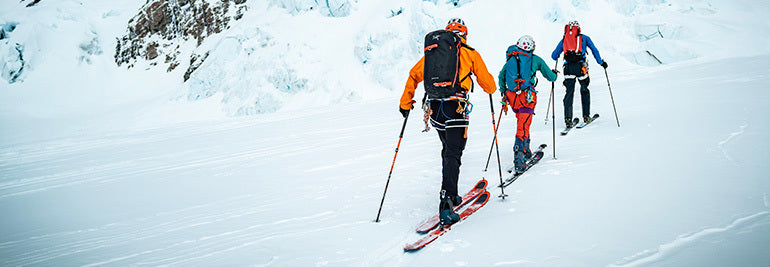
7 tips to find a safe track up the mountain
© Mark SmileySuunto ambassador, filmmaker, and alpine pro Mark Smiley is currently in New Zealand, and preparing to climb Mt Cook (3724 m), the country’s tallest mountain.
“My phone is downloading the topographical and satellite images for Mt Cook as we speak,” he says. “Having never been here before, I want to make sure I climb the right couloir.
“Selecting the right path up a mountain is a fun art to practice. The goal is to get to the top with as much go-juice in your legs as possible so you can slay the down like a boss.”
Mark is passionate about outdoor education and helping people to stay safe in the mountains. He has just released his latest online training course, perfectly timed to get skimo fans ready for the winter. The Ultimate Guide to Backcountry Skiing & Ski Mountaineering online course is a deep dive into all aspects of the sport.
The first 200 skiers to sign up for the course before November 25, and who use this coupon code: EARLYBIRD40, will receive a 40% discount on the original price. The first 50 students to sign up will also get Mark's Crevasse Rescue online course for free!
“Really I made this new course for my 26-year-old self,” Marks says. “Had I had this helpful resource 12 years ago, I would have been skiing bigger lines, more safely, in a fraction of the time.”
As a taster, here are Mark’s 7 tips to find a safe track up the mountain.
Pre trip
To make this article easier to digest, we’ve separated Mark’s tips into pre and in-trip groups. “The key is to do your homework,” he says. “That is the first priority.”
Signs of a good track
1. It doesn’t expose you to avalanche risk. 2. A gradual mellow slope, with a nice run out, where the avalanche debris would have plenty of space to fan out.3. Look for nice straight lines with a consistent incline. Eighteen degrees is a pretty good place to start. 4. Switchbacks that are in the best place possible, often that’s just downhill of trees (if you are below the treeline), or in any slightly less steep areas.5. Following a ridgeline or pushing up through dense forest is usually safer than ascending via a face and sparse forest.
Signs of a risky track
1. Unsupported convex rolls are a big avalanche risk. A convex roll is a part of the slope that bulges out. Imagine putting a salad bowl against a wall, then putting snow on the top. The snow would slide off because the bowl doesn't support it.2. Terrain traps: keep a lookout for things that could make a fall really bad, like being thrown into a creek, off a cliff, into a ravine, or into a crevasse.3. I like to look for a track that doesn't expose me to cornice, rock or icefall hazards.
Use your Suunto 9
You can download the track to your watch and then you can follow along. You can create routes in Suunto app with terrain maps, heat maps, as well as use existing activities to create routes. And you can use GPX files you have created in other services. ”I use this track as a "helpful suggestion" when navigating in whiteout conditions on a glacier, or in an area that I’ve never seen before."
Get techy
Download Gaia GPS, and get the subscription so you can take map files offline, and learn how to use it well. This app is seriously like cheating at navigation. You can download topo maps, satellite images, put a route line on the map where you want to go, and then navigate with ease.
If you want to learn more about how I use the map, check out my online course at www.mtnsense.com. In less than an hour you’ll be on your way with new-school navigation.
Click here for Mark's eight avalanche safety checks
© Mark Smiley
On the trip
Don’t be a sheep
Looking up and ahead is key to your ascent. Don't be a sheep by just walking up the skin track. Make decisions about where you are going. Most of the time that will be an existing skin track, but not always. Snow changes over time, and so too must the skin track.
Listen to you heart
The goal is to keep your heart rate at a consistent level most of the tour as opposed to revving it up and then dropping it down. Choose a track that keeps a constant slope angle, making it easier to get in the groove, keep your heart rate about the same the entire climb, and just enjoy the rhythm of movement.
Not too steep
Another skill is finding the perfect steepness that minimizes linear distance, without making it too steep. If you’re slipping out, you’re wasting energy.
Read more articles like this:
8 avalanche safety checks to tick off before the ski season
Knowing the ropes – staying safe with creavsse rescue online
Lead image: © Mark Smiley
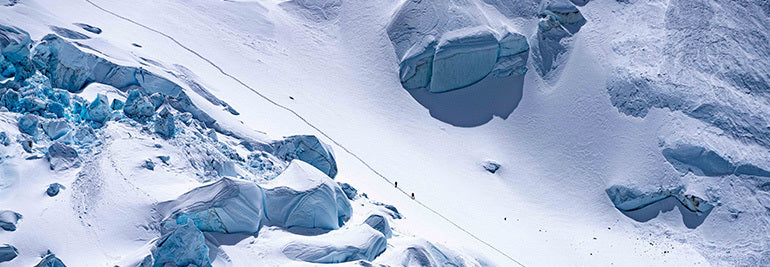
8 avalanche safety checks to tick off before the ski season
© Mark Smiley
Pro mountain guide, outdoor educator and Suunto ambassador Mark Smiley says knowing how to mitigate avalanche danger is a “$50,000 question” – there is no perfect answer; it consists of doing many small things right.
There is always danger in an alpine environment. Clearly knowing that, and having respect for the mountains, is where mitigation begins. Showing that respect comes down to being mindful of the details.
“Think of going backcountry skiing the same as a climber roping up for a climb, or a pilot getting ready for takeoff,” says Mark, 38, who is currently adventuring in the Southern Alps of New Zealand. “Doing some form of regular check is a great habit to get into.
“Early season snow dumps are super fun because the long wait is over, but it’s super important to know that avalanches can and do occur every year in these first storm systems.”
Based in Jackson Hole, Wyoming, Mark runs popular online outdoor education courses, and guides expeditions within the US and around the world. He and his mountaineer partner Janelle have climbed all 48 Classic Climbs of North America, as well as ski touring across the entire European Alps in 36 days. The couple live for the mountains.
Here is the safety check Mark does at the start of each skimo season. “These don’t take much time and avoid mindless mistakes that could have big consequences,” Mark says.
© Mark Smiley
Gear check!
Put new batteries in your avalanche beacon, and make sure the battery terminals are shiny and clean (sometimes batteries can corrode the terminals, resulting in bad connection).
It’s also a good idea to have extra kit in your car, such as extra avalanche gear, skins, AAA batteries, sunglasses, and sunscreen, that you can offer if someone forgets his or hers. “This saves a lot of time and hassle at the trailhead,” Mark says.
Slow down
Give yourself triple the amount of time to get ready for a trip because forgetting things at the start of the season is all too easy. Don’t rush, slow down, and do all those small things right.
Practice makes perfect
“Once there is enough snow on the ground, visit a beacon park and train with your beacon,” Mark says. “Especially if you or your partner invested in a new one this year.”
Get local knowledge
Before you go into the mountains, get online and research the avalanche danger in the area you will be skiing in. Find out what the avalanche trends there are. “Hopefully you’ve been checking the weather the past 48-72 hours to see if there have been major sun, wind, or snow events,” Mark cautions. “Check the avalanche report to see what the danger rating is, and dig a little deeper to see what recent avalanches have occurred. The avalanche report will also list the problems of concern. Pick a ski line, up and down, to avoid those problems.”
Know the plan
“Get on the same page with your partner(s) as to where you’ll go, and what the plan B and C are if plan A isn't working out,” Mark advises.
Car park gear check
“When you get to the trailhead, check to make sure everyone has a beacon with 50% or more battery power, that it’s on and that it works to SEND and SEARCH,” Mark says. Ensure it’s stowed properly.
“Making sure your shovel and probe are still in your pack, and not beside the garage after you dug out the car, is a good idea as well.”
Store the beacon properly
Keep your beacon safely in the right location. If you store it in a harness, wear clothing over top of it. “Often I get super hot while touring, so I like to have my beacon in my zippered (not Velcro) pants pocket,” Mark says. “Make sure you have nothing else in there, so the zipper stays closed the entire day. Don't be lazy and put sunscreen, a buff, or chapstick in there, too.”
Take it easy
Early season dumps means well hidden rocks. Don’t be a maniac; reduce your speed at the start of the season and wear a helmet.
Lead images: © Mark Smiley
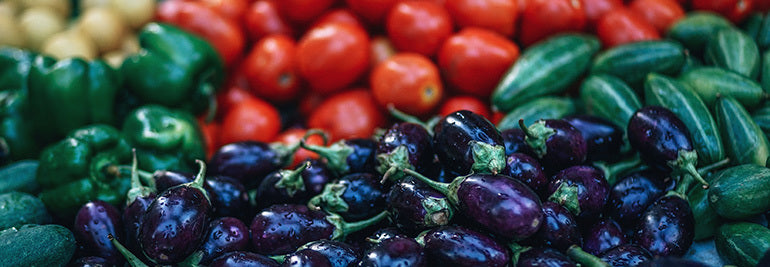
Fuelling the engine: talking nutrition with Greg Hill
Record-breaking ski mountaineer, adventurer and Suunto ambassador Greg Hill has always been a foodie. Eating well is about enjoyment, which also serves his nutritional needs. He approaches it in that order, not vice versa.
“Nutrition has always been important but more so because I really enjoy eating great food,” he explains. “Yet I also understand that the fuel we put in our bodies determines how well it runs. Much like an engine, if you put bad gas into it, it will run poorly.”
Photo by Angela Percival/ Arcteryx
Fresh colors
Greg tries to eat fresh vegetables with a variety of colors, which he says indicates nutritional richness. Whenever possible, he also cooks with food from local sources. “I do grow a small garden every year, with tomatoes, potatoes, garlic, carrots, broccoli, beets, just your basics,” he says. “It’s so nice to go and grab them directly from my yard.”
Week day diet
Greg and his family are following the “week day vegetarian diet”, meaning they only meat on the weekends. This contributes to personal health and reduces their impact on the planet. “The personal health side is pretty clear, there are so many articles about reducing red meat in your diet and the benefits involved, from a reduced potential for cancer to lower cholesterol, to living longer,” he says.
“One of the simplest way to decrease my family’s carbon footprint was to decrease our meat intake; livestock farming is responsible for 20-50 per cent of the greenhouse gases, so this was an easy way to become better earth dwellers. If you ever look into livestock it is amazing the deforestation involved, the extreme water usage and over un-sustainability of it.
Photo by Angela Percival/ Arcteryx
Healthy balance
While the Hills like to keep it fresh, they also allow themselves to indulge in a fast food meal once a week, like ordering a pizza on Friday movie night. Perfection is not the goal, Greg says, just as long as the the bulk of their diet is fresh, healthy food.
“Like every family we have certain meals that are staples, enchiladas, lasagna, salad rolls, pad thai, pizza on friday nights, and my favourite – the glory bowl,” he says.
Tofu glory bowl
In the bowl
2 cups cooked brown rice1/2 cup grated beetroot1/2 cup grated carrots1/2 cups almonds, toasted1/2 cups spinach leaves1 cup tofu, cubed
Dressing
1/4 cup tahini1/4 cup apple cider vinegar1/2 cup nutritional yeast flakes2 gloves garlic3 tablespoons tamari1 tablespoon maple syrup1/4 cup olive oil1/4 cup water
Instructions
Prepare the brown rice and set aside.Fry tofu cubes in a pan.Add dressing ingredients into a blender to prepare the dressing. Add oil in a steady stream. Taste, and thin with water if required.Assemble the bowls by placing cooked brown rice into two bowls, top with beets, carrots, spinach leaves, almonds and fried tofu cubes.Drizzle bowls with dressing.
Lead image: Photo by Fancycrave on Unsplash.
Click below to read articles in our Fuelling the Engine series:
Fuelling the engine: talking nutrition with Lucy Bartholomew
Fuelling the engine: talking nutrition with Emelie Forsberg
Fuelling the engine: a commonsense approach to nutrition
Fuelling the engine: talking nutrition with Ryan Sandes
Fuelling the engine: talking nutrition with Ultracycling Man
Fuelling the engine: talking nutrition with Mel Hauschildt
D.I.E.T (disaster imminent every time), and three unchanging principles of nutrition for athletes
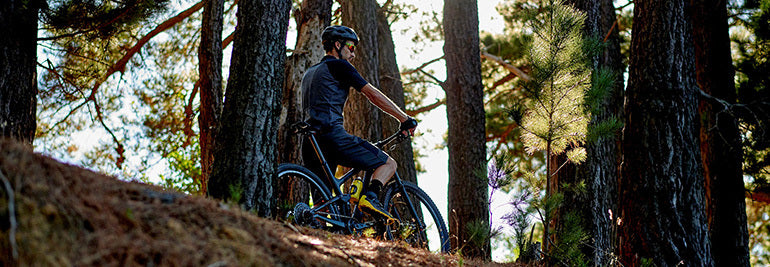
Finding the flow
Photo by Alex Gorham on Unsplash
Studies on flow states show when athletes are experiencing them the thinking part of their brain is offline. “The less you think, the better you perform,” quips Markus Arvaja, a certified sports psychology consultant and senior lecturer in coaching at Finland’s Haaga-Helia University of Applied Sciences. “We’ve studied athletes, the best of the best, studied their brains when they perform, and they have less brain activity in their prefrontal cortex. Which means they have automated their skills so they can purely enjoy their sport.”
When he’s not teaching at university, Markus, himself an ice hockey, football and tennis player, works as a mental coach for Finland’s national women’s ice hockey team and the national youth tennis team. He’s a board member of the Finnish Society of Sports Psychology. He’s passionate about people performing at their absolute best.
“Studies show peak flow states are intrinsically motivating experiences,” he says. “People become so involved in an activity that they are on automatic pilot, totally absorbed in that experience. It’s a merging of action and awareness. Thing is, you can’t force yourself to go into flow. But their are elements that help you enter into the flow space.”
Flow states, peak performance, being in the zone, runner’s highs; these are all interchangeable terms describing the transcendent experiences athletes, artists, musicians and creatives report having. Maybe you’ve experienced one yourself. Time slows down, you become totally immersed in the task at hand, it feels effortless, maybe the world seems more vivid, and you have sense of mastery. They are when athletes have their best performances and, according to Mihaly Csikszentmihalyi, who wrote a seminal book on the topic, they are a key aspect of human happiness. It’s something we can all experience, not only elite athletes and artists.
Neuroscience has revealed much about what’s happening in the brain during a flow state. Brain waves change from beta, more rapid waves underlying waking consciousness, to somewhere between alpha and theta waves, where we daydream and first enter into sleep. This is when many people have their best ideas. Neurochemicals associated with pleasure and performance – endorphin, serotonin, dopamine, norepinephrine and anandamide – are the raw ingredients of flow. Perhaps the most interesting fact is how different regions of the brain respond during flow; for example, studies have found the prefrontal cortex, the area of the brain associated with self monitoring – and also self criticism – goes offline during flow. Instead of constantly analysing and evaluating, we do things spontaneously.
“Sometimes coaches can interrupt the flow happening for athletes by giving too much information for the athletes’ minds,” Markus says. “It’s better to say only one or two things.
“For flow, your mind should be free of worry and unnecessary thoughts. Stay in the present moment by quieting the mind and turning off the inner critic. Mindfulness certainly helps with this.”
Stay tuned for the next article in our series on flow: the ingredients of flow.
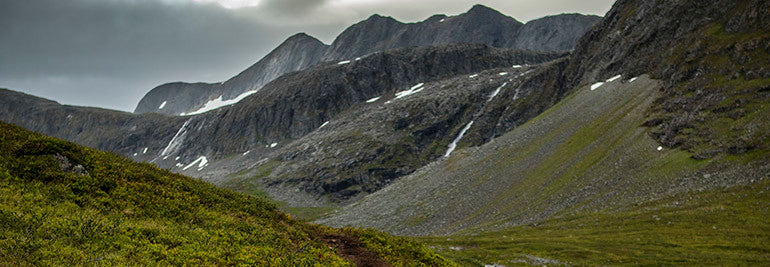
Big data for Vertical Week 2019 is here: find out who came out on top!
When we crunched the statistics from all the training around the world during Suunto World Vertical Week 2019, we felt our hard work had paid off. It had given you all the excuse to chase meters outside, whether on behalf of your nation, chosen sport or for your own challenge – exactly our intention.
There’s something about the sight of a hill or mountain in front of us that calls us to push ourselves. The challenge of the ascent is just as satisfying as the view from the top. That’s why we do it! Well done to everyone who participated.
Top countries
This year, we first report a major upset. In the previous two years, Austria has come out on top as the nation that achieves the most vertical gain by average. Not this year – the Alpine nation has been knocked off its perch. This year, Italy, Slovakia and Slovenia, all mountainous nations, climbed more than Austria. But more surprising, Portugal also came in ahead of Austria.
In the last two years the Swiss have also come in near the top, but this year they have dropped to the eighth position. What’s happened in Austria and Switzerland? Someone tell us!
Honorable mention
This year, Spain deserves an honorable mention. Spain came first in three divisions: totals per country, mountaineering, and trekking. It was also in the top five for four different activities: mountaineering, trekking, mountain biking and cycling. All up, Spain features in six of the nine country-related lists below, the only country to do so. Well done Espana!
Here are the results by nation
While these numbers might not seem so mind-blowing, remember they are averages, and a high average is indicative of many big days out in the hills.
Italy 385 m
Slovakia 360 m
Slovenia 346 m
Portugal 342 m
Austria 337 m
Spain 308 m
Switzerland 288 m
France 283 m
Canada 276 m
Norway 261 m
Totals per country
This year we also decided to look at the totals per country. In these countries, World Vertical Week participants have been really active and gotten out there to climb, even only a little, to add on their country’s total number. These little efforts have added up.
Spain 645.000 m
France 546.000 m
Italy 379.000 m
United States 377.000 m
China 250.000 m
Austria 216.000 m
United Kingdom 183.000 m
Japan 150.000 m
Norway 142.000 m
Switzerland 140.000 m
Average ascent by activity
At least as interesting as the country numbers are the activity specific stats. From these, we can see that skiers clearly put in the biggest average days. Trail running and mountain biking are probably under-represented because it’s winter in the populous Northern Hemisphere.
Like Vertical Week 2018, ski touring, mountaineering and trail running came out on top this year. The question is, which nations did the most of each?
Ski touring 830 m
Mountaineering 594 m
Trail running 474 m
Mountain biking 355 m
Trekking 311 m
Hiking 213 m
Nordic skiing 199 m
Cycling 193 m
Running 100 m
Activity by country
Ski touring
France 1127m
Italy 1085m
Austria 864m
Switzerland 828m
Germany 776m
Two countries pass 1000 m of vertical gain by average!
Mountaineering
Spain 1071m
UK 947m
Poland 798m
USA 716m
Germany 651m
Trail running
Hong Kong 1176m
Japan 901m
Malaysia 813m
China 765m
Portugal 713m
Asia dominating, showing the growing popularity of the sport in the region!
Mountain biking
Italy 476m
Slovakia 474m
UK 437m
Spain 422m
Austria 394m
Cycling
Colombia 499m
South Africa 485m
Israel 446m
Spain 438m
Italy 363m
These nations have favorable weather for cycling in March!
Nordic skiing
France 379m
Canada 321m
USA 285m
Norway 243m
Austria 212m
Trekking
Spain 566m
Italy 527m
Malaysia 363m
Italy 362m
Poland 304m
Individual top performances
While we can’t give away too much information here, such as who and where, we can share some insight in the individual top performances over the week: To be on the pointy end of the rankings one had to climb more than 10000 meters over World Vertical Week. And to stand out with a single activity one had to climb 4000+ meters in one go!
Thank you, everyone, for participating!
Read three inspiring stories from the World Vertical Week!














































































